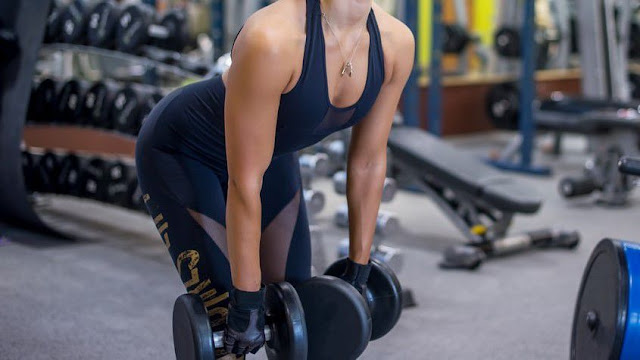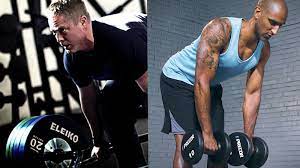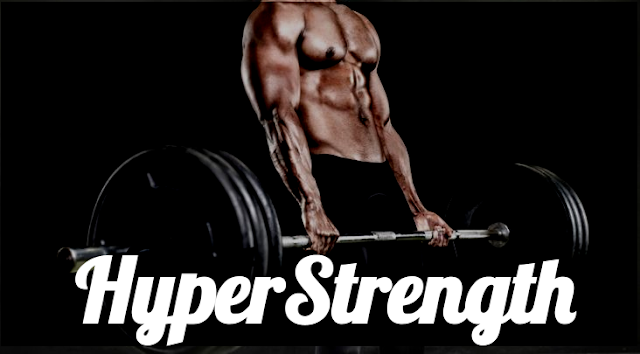What is the DB RDL?
This version of the deadlift is a great exercise to work your back, biceps, leg, and core muscles. It also helps improve your balance and coordination.
How to do the Dumbbell Romanian Deadlift
The dumbbell deadlift is similar to the barbell deadlift, with one important difference. On the barbell, it's a lot harder to maintain tension on your spine and avoid injury, but with the dumbbells, you can keep the weight low on your hips and knees. This makes it easier for beginners to perform this exercise without injury.
- Adopt a sturdy, wide stance with your feet spread at shoulder-width apart.
- Hold the dumbbell at your side with an overhand grip so that your palms are facing towards you.
- Keeping a straight back, hinge at the hip and start to push your glutes backwards.
- Lower the dumbbells down in front of you until they are just below your knees.
- From this position, push from the heels to fully extend the hips and knees.
- At the top of the movement, pause for a second and squeeze the glutes
- Repeat for the required number of reps and set.
Muscles worked
Benefits of performing a DB RDL
The dumbbell Romanian deadlift is a great exercise for overall fitness and strength. Here are some of the benefits of performing this exercise:
-It can help build muscle and strength in the core and back muscles.
-It can improve your balance and coordination.
-It can help you increase your overall endurance.
-It can help improve your grip strength.
-It can help improve your power, speed and acceleration.-
-It can build the muscles in your legs that are responsible for running or jumping.
-It can build even more muscle in the lower back.
How to get the most from the DB RDL
A) Erect posture: If you stay upright during the set, you will use less weight and compensate by standing deeper and leaning forward. This can sometimes cause unnecessary stress on joints such as knees, hips, back and shoulders (especially if you're a taller lifter).
B) Breathing: As you lift heavier weights, you will have to breathe heavier breaths to support it. When the chest expands from inhaling, be sure to keep the chin tucked so that the rib cage does not rise unnaturally.
Do not squeeze your shoulder blades together; it can cause pain. Keep your chest and abdomen open throughout the set. If you feel fatigued, take a break to let your muscles relax and allow breathing to be easier.
C) Rotation: Avoid rotating your trunk area when you lift heavy dumbbells (it will actually cause unnecessary stress on joints such as knees, hips, back and shoulders). Do not rotate the head during deadlift because it puts too much stress on the neck. Avoid leaning forward when picking up a heavier weight (to avoid stressing the spine); instead, try to keep the centre of gravity as vertical as possible by keeping your back straight and head up.
D) Posture: Do not lean all your weight on one side of the body (avoid crossing your hands over the other side of your body, which may cause a strain on wrists and elbows) or cross your feet while lifting; instead, use both feet to lift and should be slightly ahead away from the barbell.
E) Exercise order: Choose exercises in such a manner that you are able to get deeper into position, thus allowing muscle groups to rest between sets.
F) Rest: Resting periods are very important. A general rule is that when you start to feel heavy fatigue, it usually means that you can manage about half the full weight for another repetition. Avoid resting too long between sets; when you feel fatigued, try to continue working out until you can no longer lift the weight.
However, if you have successfully completed your workout but feel tired and fatigued (even a little), do not try to continue working out.
This usually happens because you are so fatigued that you simply cannot lift any more weight with your current form, which means that no new muscle will be developed. If you feel like this is the case, it's better to stop at this point rather than continue on with the heavy DB RDL.
G) Repetitions: It is important to keep track of how many repetitions you are doing which comes in handy when calculating your sets and rest periods.
H) Load: A general rule of thumb is one-half your body mass for each set performed; i.e. if your body mass is 100 pounds, you should do a set of 50 repetitions. I) Load: For best results in the gym, you should be lifting around 80-90% of your maximum strength level on each repetition.
J) Rest Periods: Rest periods are very important to get the most out of your workout. You should rest for 30 seconds at least between each set, but it may take up to three minutes and not longer than 60 seconds between each exercise if you're doing multiple sets (2 or 3).
K) Performing cardio exercises: It can be difficult to determine whether you are actually increasing your aerobic capacity and improving cardiovascular endurance with heavy DB RDL training. Try adding in some HIIT on the treadmill or exercise bike.
L) Nutrition: Nutrition plays an important role in increasing muscle mass and building strength. Simple carbohydrates are best for this reason. A good rule of thumb is to limit your intake of simple sugars and simple carbohydrates such as bread, cereals and pasta to about 100 grams per day.
M) Supplements: When it comes to supplements, it's important to remember that you are the final judge of what works best for your body. Creatine, Whey Protein, Whey Isolate, Fish oils and multivitamins all play a big part in bodybuilding and will help you to get the most out of your training. If you are a Vegan, Vegan whey is the best way to make sure that you are taking on enough protein to supplement your bodybuilding.
Alternatives to doing a DB RDL
- opting for a barbell deadlift instead
- the trap bar deadlift
- the stiff leg deadlift
- the sissy squat
DB RDL vs Barbell Deadlift
The dumbbell deadlift is a great lift for building strength and muscle in the Legs, Glutes and Hamstrings. The barbell deadlift is a more traditional lift that can be more difficult to learn and perfect, but the dumbbell deadlift can still be a great exercise for people just starting out.
The key difference between these two lifts is that the barbell deadlift recruits more muscle mass and causes more damage to your lower back. The dumbbell deadlift is also a great exercise for gaining lean muscle because it requires less weight than the barbell deadlift.






.png)




